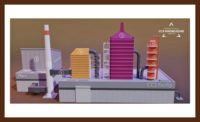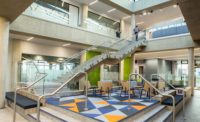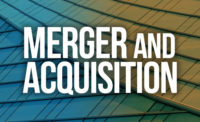HeidelbergCement is turning its eyes to Washington in anticipation of an antitrust ruling, perhaps in as soon as two weeks, which is the German-based building materials giant’s next big hurdle in its ongoing effort to acquire Italcementi. The European Commission recently granted approval for the deal in exchange for divestment in what would be the combined firm’s assets in Belgium.
The €3.7 billion ($4.1 billion) cash-and-stock purchase will bolster Heidelberg operations in Italy, France, Canada, the United States and in emerging markets such as Thailand and India. The company expects to wring €400 million ($447 million) in savings out of the combined new enterprise. Analysts say the 150-year-old Bergamo, Italy-based acquisition target, with a market cap of €3.6 billion, possesses a strong research and development operation which would be to the benefit of the new, larger Heidelberg.
Heidelberg over the last few months has been laying the financing groundwork for the deal, issuing debt certificates, €1.75 billion in eurobonds and arranging bridge financing. Company spokesman Andreas Schaller says the prefinancing pieces are coming together. “That is already largely done,” he says. But even though the deal is taking much of Heidelberg’s attention, the firm is making other moves of interest: the firm is adding an entire new production line to its Caucasus operations in the Republic of Georgia and is looking to add a new quarry to operations in the West Bank.
HeidelbergCement launched its acquisition bid for Italcementi last summer, agreeing to purchase a 45 percent stake in the firm from the Pesenti family financial holding company Italmobilaire using a mix of cash and HeidelbergCement shares from a stock issue. The European Commission clearance came down on May 26. The U.S. Federal Trade Commission (FTC) is expected to issue its ruling in the next few weeks, perhaps by mid-June.
The EC’s ruling addresses competition and antitrust issues in Europe. Both HeidelbergCement and Italcementi have operations in Belgium, with Heidelberg running a limestone quarry west of Brussels near the French border and Italcementi, through its Belgian subsidiary Compagnie des Ciments Belges, operating cement, aggregate and ready-mix ventures. Heidelberg and Italcementi are already coordinating their Belgian divestment. The next step will come from the FTC. If the FTC rules favorably, Schaller says the next steps will be to close the 45 percent stake purchase from Italmobilaire, with a target of early July. “We’ll need to wait and see,” he says about the rest of the process. “It will depend on how fast things run with the Italian stock exchange. Also summer holidays are coming up. And what happens with the FTC is not under our control.”
Heidelberg’s interest in the acquisition, aside from keeping pace with its main rival LafargeHolcim, comes in its growth potential and a portfolio mix of materials operations in 22 countries. These include cement plants, aggregate quarries and ready-mix concrete facilities. Heidelberg will gain build out its North American footprint, particularly in eastern Canada, and bolster its strategy of operating in urban centers with presence in Milan, Cairo, Bangkok, Chennai, Marrakech and Paris. What remains somewhat unclear is the effect it will have on market prices for cement consumers such as the commissioners of large engineering projects and concrete architecture.
The new Heidelberg will keep research and development based in Bergamo’s i.Lab, a 248,000 square-foot V-shaped concrete LEED-Platinum accredited facility designed by Richard Meier & Partners and completed in 2012. The facility features a cantilevered boardroom and concrete cladding displaying Italcementi innovation: the lab’s steel trusses are fixed with TX Active “biodynamic” concrete which absorbs pollutants as it reacts with direct sunlight and cleans itself. Italcementi catalytic concrete was also used in building the Palazzo Italia in Milan for the city’s 2015 Expo. The Palazzo was designed by Nemesi & Partners in Rome.
“The Italcementi innovations are impressive and I am sure they will broaden the portfolios of HeidelbergCement,” says Volker Stoll, a senior analyst at Landesbank Baden-Württemberg who follows the company. “With its greater worldwide presence there will be nice leverage for these activities—research and development is always a question of fixed-cost amortization, so the improved coverage of a combined entity should be a positive.”
Not everyone’s convinced that the deal as a whole is a plus, however. John Messenger, a construction and building materials analyst at Redburn, thinks the deal will be a net minus from a shareholder perspective. Calling the acquisition “expensive and flawed” in a Redburn report issued in May, Messenger writes that excess capacity and falling plant costs are a potential downside for the deal. “Organic investment could have boosted shareholder value. Italcementi will not.”
The Italcementi acquisition has the spotlight, but HeidelbergCement, which already has the capacity to produce 142 million tons of cement, has 19 billion tons of aggregate reserves and employs 45,000 people, is making other moves. The company recently decided to invest $100 million into building out a new production line for its cement plant in Kaspi, Republic of Georgia, between the capital Tbilisi and the border with South Ossetia in the Caucasus. Another $20 million will be poured into the supporting aggregate and ready-mix concrete plants there.
Heidelberg is also on the lookout for a new quarry site in the West Bank. According to Reuters the firm currently excavates sand and gravel in “Area C” in the West Bank, which is fully administered by Israel. Schaller says Heidelberg has set up a new subsidiary called HeidelbergCement Palestine. “We are currently looking at some opportunities to open businesses, quarry businesses, in ‘area A’ or ‘area B,’” he says, referring to the areas including Nablus, Ramallah and Bethlehem, in the former, and a more rural strip including 440 Palestinian villages, in the latter.







Post a comment to this article
Report Abusive Comment